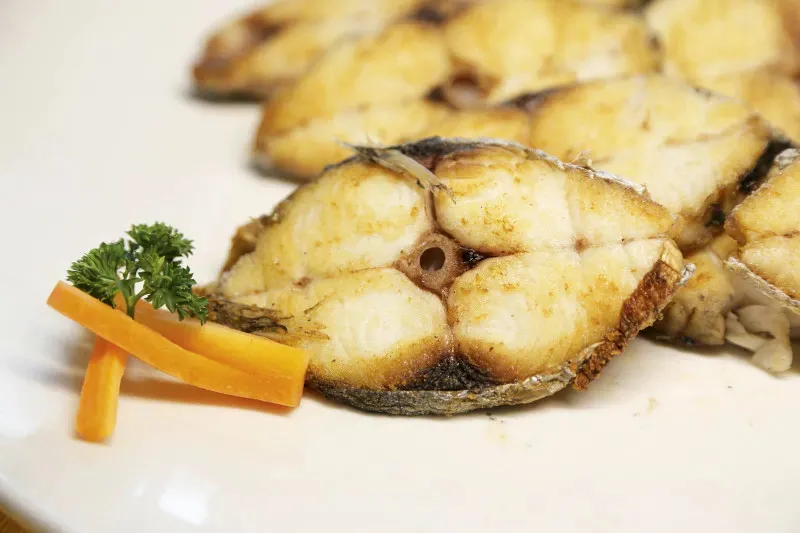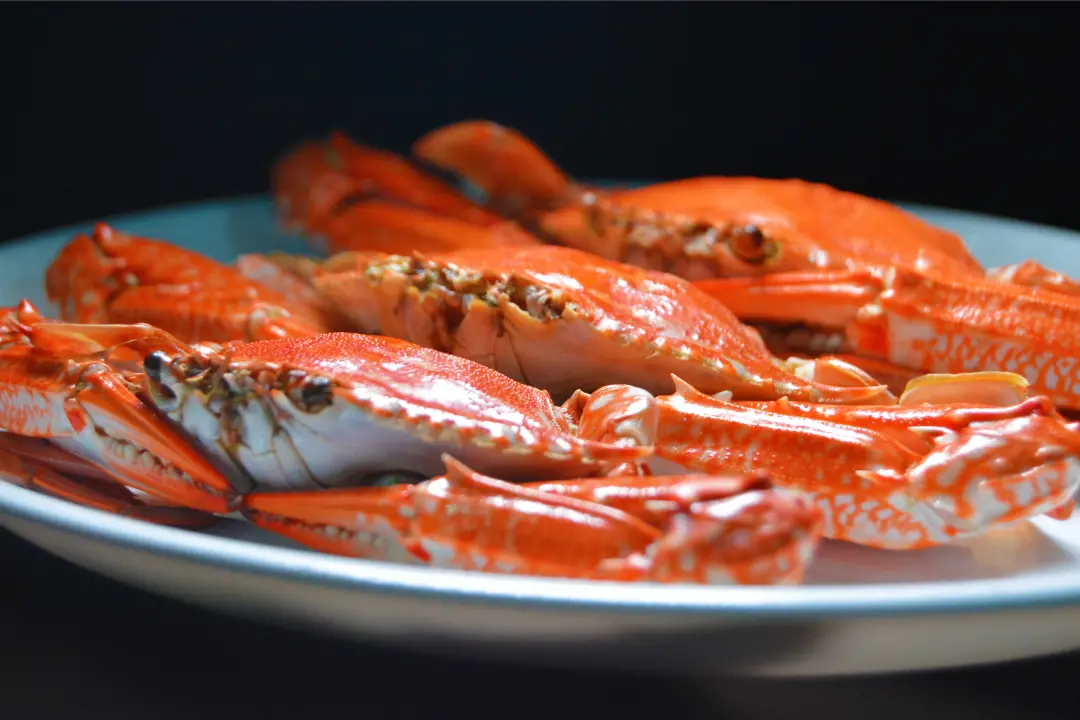It was early summer, and the scent of blooming gardenias filled the air. A friend brought me a lively, wriggling eel and half a crate of variously sized swimming crabs. With a proud grin, he told me they were freshly caught from Xihu Port in Xiangshan—“You’ve never tasted seafood like this in your life,” he declared confidently.
The eel was slightly smaller and shorter than typical sea eels, with a greyish back, weighing around 350–400 grams. After being chopped and steamed, just lifting a piece revealed the springy collagen trembling delicately between my fingers. One bite—and the tender, elastic flesh melted in the mouth like boneless silk. The crabs, though small, turned bright red after steaming and were bursting with meat. Their shells and undersides looked like they might split open from fullness, yet still clung tightly together. With a gentle twist, the top shell came clean off. The rich, runny roe slipped onto the tongue, dissolving before it could even be swallowed. The pure white crab meat pulled apart in delicate strands, leaving behind an unforgettable sweetness and umami that lingered long after the last bite.

From the Documentary “The Journey of the Crab”
That first taste of coastal seafood struck deep, right to the bone, and never left me since.
Most people assume that the bigger and pricier the seafood, the better. But those who grow up by the sea know the real treasure lies in the small, seasonal catches from nearshore waters. Big seafood is often a feast for the eyes, but can quickly become cloying. Small seafood, though, is pure joy for the palate—never tiring, always satisfying. With minimal seasoning, their natural flavours shine. Add a touch of ancestral wisdom and technique, and their umami bursts forth in full.
A handful of noodles, a few small fish, two or three baby shrimp, a couple of clams, and a sprinkle of chopped scallions—that’s enough for a steaming bowl of seafood noodles: simple, savoury, filling, and irresistible. To those who have drifted far from home, this flavour is irreplaceable—it’s the taste of home. Living near the sea means year-round access to these blessings of the ocean.

(Photo by VCG)
In the first lunar month, small but rich jade sole fish are caught near the coast. Steamed with a dash of rice wine and a few drops of soy sauce, they become a dish of pure, unadulterated flavour. In February, plump little sand gobies from Jingang are braised until dry and rich, perfect with a drink. As March winds awaken the blushing peach blossoms, peach-flower female fish with shimmering scales and silky but firm flesh leap eagerly onto dining tables. Add a handful of home-pickled vegetables to make soup, and don’t forget to brace yourself for the intensity of flavour.
Around the Qingming Festival is the best time for mackerel, especially the prized chuanwu variety from Xiangshan’s Xihu Port. A true Xiangshan mackerel is slender and straight, with a glimmering greenish back. These fish migrate each March and April from the pristine East China Sea to spawn, enduring a mix of salt and fresh water. That journey gives the mackerel from Xihu Port an unrivaled texture and taste, along with elevated protein and nutrition. However it's cooked, the result is always the same: fresh broth, tender meat, unforgettable flavor.

Pan-fried Mackerel
As the last crabapple petals fall and loquats ripen, mantis shrimp (locally called pipixia) reach their peak. Fat with roe and too plump to peel, they can be boiled, salt-fried, or chopped and marinated for two days with ginger and salt. The tender meat, once marinated, practically glides into your throat with a single slurp—a taste only the initiated truly understand.
In June and July, swimming crabs and farmed shrimp dominate the scene—then green crabs take the spotlight. Steamed, stir-fried with scallions, coated and fried, made into soup or braised in soy—they appear in every household, every which way.
When the weather cools and larger seafood begins to flood the markets, small seafood gradually fades from its peak season, retreating to rest and replenish for next year’s bounty. By then, only a few fattier species like copper basin fish and skinless fish remain palatable, while most shellfish become tough and flavourless.
People raised by the sea say the marine bounty used to be far richer. After each high tide, streets filled with fisherfolk bringing back baskets full of salty, briny small seafood. They didn’t even have time to wring out wet clothes or wipe off mud-splattered legs before loudly hawking their catch to the crowd gathering around.
Swimming crabs clawed at the air, trying in vain to escape their bamboo baskets. Wild baby shrimp flopped about, occasionally revealing a few gem-like farmed prawns among them. Golden yellow hairtail disappeared in minutes. Fat mantis shrimp, as thick as fingers and bursting with red roe along their veined backs, snapped violently—draw blood from your fingers if you weren’t careful. There were slick, dark mudskippers, all sorts of clams, and sometimes even tiny octopuses clinging tightly to plastic bottles, waiting for a discerning buyer to take them home.
 Photo by pixabay
Photo by pixabay
If tides came in late and seafood didn’t sell out, locals would flock in for bargains. In June and July, when the small swimming crabs were at their plumpest, every household would bring out basins to fill. A few slices of ginger and scallions at the bottom of the pot, a big batch steamed over fire—and just like that, it became the perfect snack for a family to gather around, chatting and feasting. Most of the time, they’d eat the luscious roe and white meat under the shell, then casually toss the rest of the crab away.
Source: Sanlian
Editor: Ye Ke



